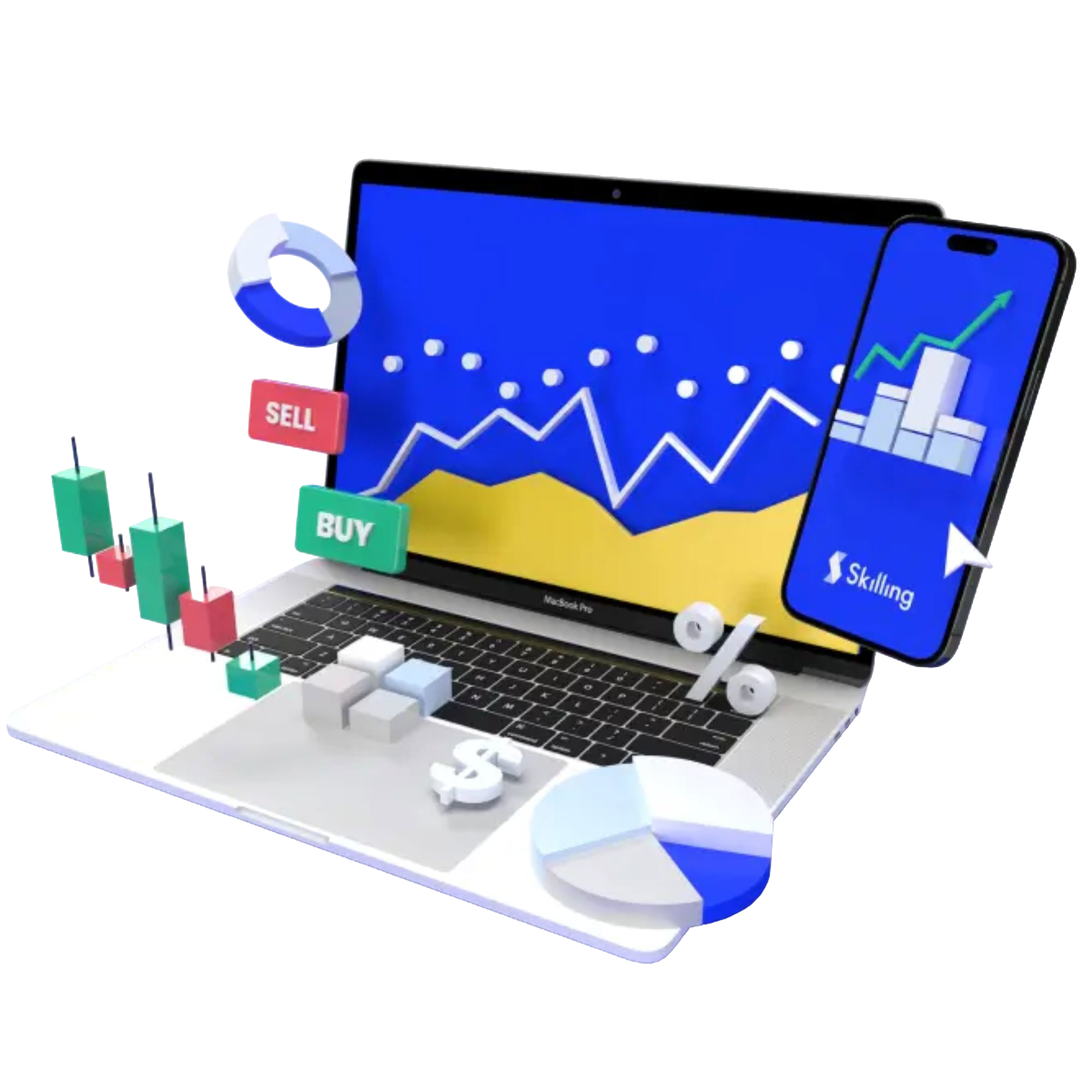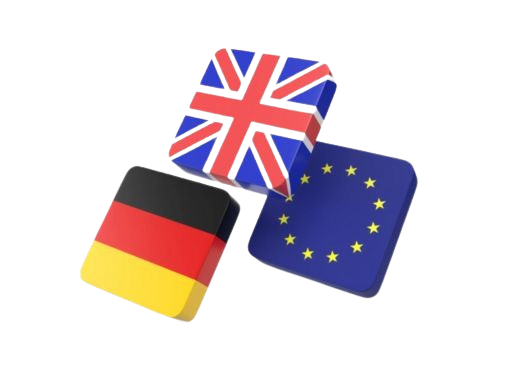If you want to start investing in ETFs, you first have to understand what they are and how they work. Keep reading to learn more.
Investing in ETFs: what does it mean?
Investing in ETFs means putting your money into a fund that holds a mix of different investments. ETFs, or Exchange-Traded Funds, are like baskets that contain various assets such as stocks, bonds or commodities. When you buy a share of an ETF, you own a small part of all the investments in that basket.
Practice with a Demo Account
Try our demo account and experience real market conditions.
71% of retail CFD accounts lose money.

ETFs are traded on stock exchanges so that you can buy and sell them throughout the trading day, just like individual stocks. But they can also be traded online using platforms like Skilling in the form of CFDs (Contracts for Difference). This allows you to speculate on the price movements of ETFs. However, trading CFDs involves higher risk and complexity compared to buying ETFs directly.
They are popular because they allow you to invest in a wide range of assets without having to buy each one separately. For example, if you want to invest in silver, you could buy the iShares Silver Trust (SLV.US), which holds physical silver and aims to track the price of silver. This helps spread out your risk because if the price of one asset in the ETF drops, the other assets could help balance out the overall value of the ETF.
Risk disclaimer: All investments come with risks, and ETFs are no exception. The value of ETFs can go up and down, and you might lose money. It's important to invest only what you can afford to lose and to understand the risks involved.
Capitalise on volatility in index markets
Take a position on moving index prices. Never miss an opportunity.
71% of retail CFD accounts lose money.

Examples of ETFs
- SPX500 (SPX500): This ETF tracks the performance of the SPX500 index, which includes 500 of the largest publicly traded companies in the United States. It gives investors exposure to the overall performance of the U.S. stock market.
- SPDR Gold Trust (GLD.US): This ETF holds physical gold bullion and aims to track the price of gold. Investors use it to gain exposure to the price movements of gold, which is often seen as a hedge against inflation and a safe-haven asset during economic uncertainties.
- S&P Oil & Gas Exp (XOP.US): This ETF tracks the performance of companies involved in the exploration and production of oil and gas. It includes both upstream (exploration and production) companies, which are involved in finding and extracting oil and gas, and may also include oilfield services companies.
- Global Copper Miners (COPX): This ETF focuses on companies involved in the mining and production of copper globally. Copper is a vital industrial metal used in various sectors including construction, electronics, and transportation. The ETF provides exposure to the performance of copper mining companies.
Difference between investing and trading ETFs
Investing in ETFs involves buying them for the long term to benefit from potential growth and dividends. Investors aim to build wealth over time by holding ETFs through market fluctuations, focusing on the underlying assets' performance.
Trading ETFs, on the other hand, is about buying and selling them more frequently to benefit from short-term price movements. Traders use technical analysis and market trends to make quick decisions, often holding ETFs for days, hours, or even minutes. They seek to capitalize on volatility and market inefficiencies, aiming for short-term gains rather than long-term investment growth.
Which other ETFs on CFDs can you trade with Skilling?
With Skilling, you have a myriad of ETFs to trade in the form of CFDs. Simply open a free trading account and get started with other ETFs such as:
- iShares Russel 2000 (IWM.US) - Category: Small-Cap Stocks
- iShares MSCI Emerg (EEM.US) - Category: Emerging Markets
- Financial Select Fund (XLF) - Category: Financials
- Energy Select SPDR (XLE.US) - Category: Energy
- Technology Select (XLK.US) - Category: Technology
- Materials Select Sector (XLB) - Category: Materials
Summary
Before you consider investing or trading any ETF, it's important to understand the risks involved. ETFs can fluctuate in value due to market conditions, sector volatility, liquidity issues, and tracking errors. Past performance is not indicative of future results. Consider your risk tolerance and consult a financial advisor if needed.











